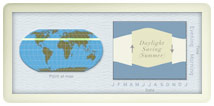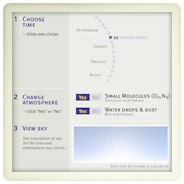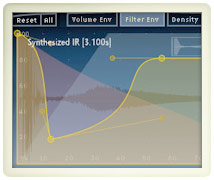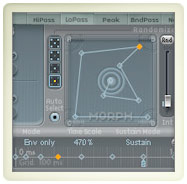Community Embraces New Word Game at Mid-Year Play Day This past Sunday, families at Takoma Park’s Seventh Annual Mid-Year Play Day had the opportunity to experience OtherWordly for the first time. Our educational language game drew curious children and parents to our table throughout the afternoon. Words in Space Several children gathered around our iPads […]
Read more
Another interface modeling sounds in Apple Logic.
|
Problem
You need to show dependencies between components or the key themes in a system. For example, you may need to demonstrate that an ecosystem consists of many species; that an orchestra has multiple instruments; or that the path of a comet depends on its speed, trajectory, and the mass of nearby planets.
Solution
Present the visitor with a model of the system, and allow them manipulate it using the following two methods:
- Multiple instances. The model is a short animation, 5 to 30 seconds long, and the animation depends on the starting conditions. Either randomly set the starting conditions each time the model is run or let the visitor set the starting conditions.
- Real-time changes. The model is a continuous animation, such as air flowing through a whistle, and the visitor can adjust parameters in real time, such as the position of the air entry and the dimensions of the air chamber.
Discussion
By breaking or modulating a complex system, the visitor gains a strong appreciation for how it works and how the various components interact.
This technique is particularly powerful for basic physics phenomenon, such as trajectories, orbits, and vibrations. In addition, it is one of the most effective teaching tools.
Note that virtual reality can be simulated. For example, you do not need to calculate the fluid dynamics of airflow in real-time. Rather, you can have a series of rendered frames, and recorded sounds, to create the illusion of real-time reality.




